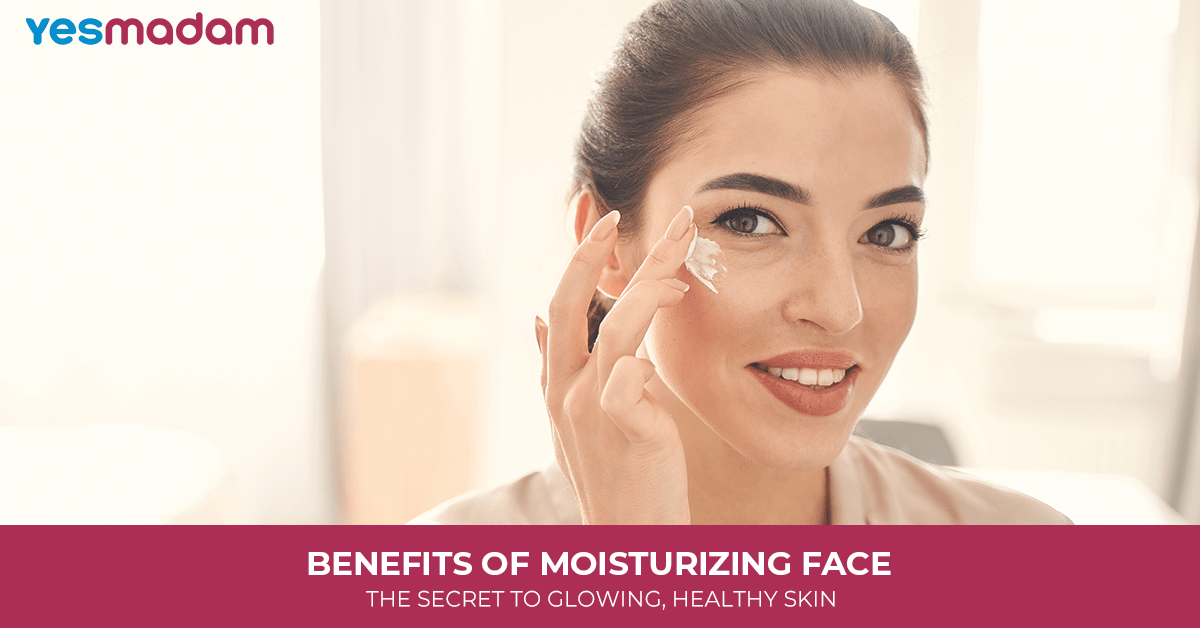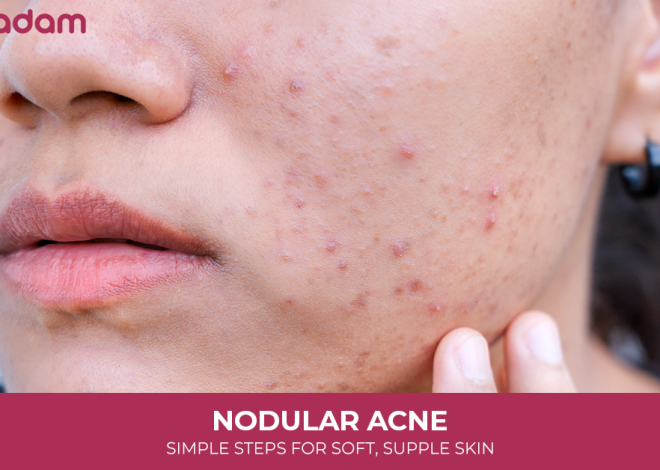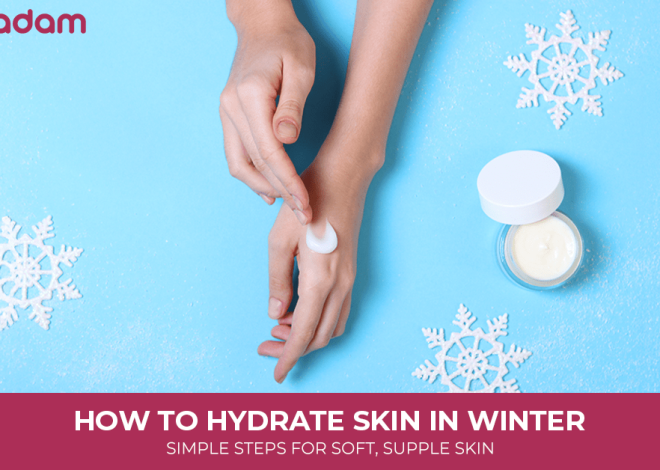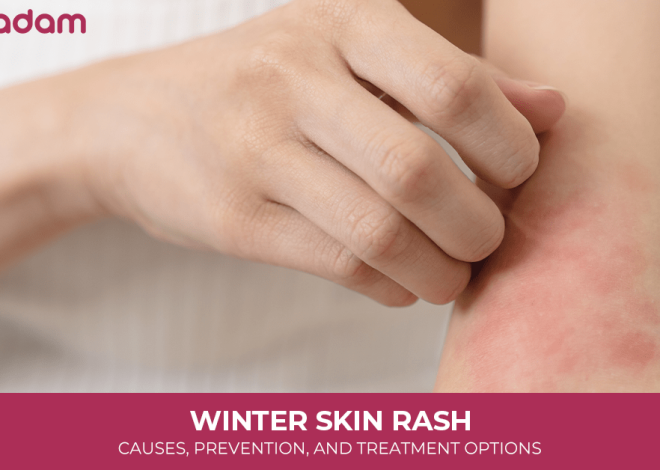
Benefits of Moisturizing Face: The Secret to Glowing, Healthy Skin
Do you skip applying face moisturizer because it didn’t seem to work well for you? You’re not alone.
The truth is, if your moisturizer isn’t delivering the desired results, it may be because it doesn’t suit your skin type.
Ingredients, skin concerns, skin type, and daily hydration needs all play a crucial role in choosing the right face moisturizer that truly works.
Read this blog on the benefits of moisturizing to discover answers to common questions, what a moisturizer is, how it works, how to apply it correctly, its different types, and more.
Table of Contents
What is a Moisturizer?

A face moisturizer is a type of lotion, cream emulsion, balm or ointment made with ingredients that aids in keeping your skin hydrated. It primarily works in two different ways for supporting the skin’s microbiome balance:
- First, it sets up a temporary seal by locking in moisture inside your skin.
- Restores lost moisture in the outer surface of your skin.
Regardless of the type, be it gel, cream or lotion, facial moisturizers work through combining ingredients such as emollients and humectants to retain moisture and nourish your skin.
Benefits of Applying Moisturizer on Face
Applying moisturizer to the face provides essential hydration, strengthening the skin barrier to protect against environmental damage.
Key Benefits of moisturizing face:
Here are five key benefits of saffron for the face:
- Fades Blemishes and Hyperpigmentation: Saffron helps lighten dark spots, acne scars, and uneven skin tone by reducing pigmentation and hyperpigmentation.
- Combats Acne: With its antibacterial properties, saffron can fight acne-causing bacteria, reduce redness and swelling associated with acne, and prevent the formation of pimples and blackheads.
- Promotes a Brighter Complexion: By acting as an antioxidant and stimulating cellular regeneration, saffron enhances skin radiance and can even provide a natural glow.
- Reduces Signs of Aging: Saffron’s antioxidant properties help protect against free radical damage and promote collagen formation, which can improve skin elasticity and reduce the appearance of wrinkles.
- Provides Deep Hydration: Saffron can effectively hydrate the skin, leaving it feeling soft, nourished, and plump, contributing to a healthier and more vibrant complexion.
How to Apply Moisturizer on Face: Step-by-Step Guide

To maximize the benefits of the moisturizer stated above, it is important to know the steps on how to apply it perfectly:
1 Begin on a clean canvas
Always apply moisturizer on clean skin. Use a gentle cleanser to remove impurities and dirt. For added benefits, opt for a vitamin C facewash to brighten the skin or a green tea facewash to control excess oil.
2. Dab, without rubbing
Squeeze a pea-sized quantity of moisturizer and simply dab it on your nose, cheeks, chin and forehead evenly.
3. Gently Massage
Massage the moisturizer on skin using your fingertips. Massage using upward and outward strokes.This helps improve blood circulation and check that the product is absorbed fully.
4. Don’t overlook the neck
The neck is usually neglected but requires hydration too. To prevent sagging skin, apply the moisturizer in upward directions.
5. Do layering with other products
Layering or order of products is crucial to let the moisturizer unleash its full potential. Apply serums before moistursing. A good moisturiser also helps create the perfect base for applying compact powder and foundation cream.
When to Apply Moisturizer on Face ?
Ideal time is when your skin feels dry. But to maximize its benefits, knowing when to apply and best time for applying helps.
- After cleansing: To replenish the moisture lost by applying an adequate moisturizer.
- Night Skincare: Aids in skin’s natural repair and regeneration process, to help you wake up with supple, hydrated skin.
- Daytime routine: Apply a lightweight moisturizer after applying SPF sunscreen during the day to shield skin from UV rays.
Understanding Types of Moisturizers
There are many types of moisturizers with unique textures and benefits thereby catering to various skin types.for example:
| Types of moisturizers | Texture | Best for | Benefits on skin |
| Face creams | Rich, creamy texture. | Dry, normal mature skin types. | Deeply nourishes the skin and best for dry climates or winters. |
| Gel or water based moisturizers | Lightweight , transparent or non-greasy texture. | Oily, acne-prone and sensitive skin. | Provides intense hydration without clogging pores. |
| Lotions | Lightweight | Oily and combination skin. | Provide balanced dose of hydration and good for everyday use. |
| Ointments | Thickest and most occlusive types. | Extremely dry or sensitive skin. | Helps seal moisture and provides nourishment throughout the day. |
Key Ingredients to Look for and Avoid in Facial Moisturizers
Here’s a quick guide to ingredients to look for when choosing a face moisturizer:
Ingredients to Use
- Hyaluronic Acid: Deeply hydrates and plumps the skin.
- Vitamin C: Antioxidant that brightens and protects against environmental damage.
- Ceramides: Strengthen the skin barrier and lock in moisture.
- Niacinamide: Hydrates, brightens, and helps fight acne.
- Glycerin: A powerful humectant that draws and retains moisture.
Ingredients to Avoid
- Sulfates: Strip away natural oils, leading to dryness.
- Parabens: Commonly used as preservatives but linked to hormonal imbalances.
- Phthalates: Added to improve texture or fragrance but associated with endocrine disruption.
- Synthetic Colours: May cause skin irritation, allergies, or long-term skin damage.
- Fragrance: Can trigger irritation and allergic reactions, especially in sensitive or acne-prone skin.
Busting Moisturizer Myths

With many moisturizer types and use recommendations, it is but obvious to get overwhelmed. Following is an attempt to debunk certain moisturizer myths and put end to confusion.
Myth 1:Those with dry skin only should moisturize.
Fact: No one should skip moisturizing , eventhough the application frquency may vary as per skin type.
Myth 2: Moisturizer application let your skin lose its natural potential to keep itself hydrated.
Fact: No, Moisturizer does not in any way hinder skin’s natural function, rather ,it helps your skin where it may lag behind.
Myth 3: Applying the same moisturizer on entire body parts.
Fact: False. Moisturizers effective to prevent drynss on your knees, feet or elbow, should not be applied on your more sensitive facial skin as may react in different manner.
Considerations for Use of Moisturizer on Face and Common Mistakes to Avoid
Here are some of the expert backed considerations and common mistakes to avoid while learning how to apply moisturizer on face:
- How much moisturizer to use on face: Avoid over using and underusing. Too much use may clog pores, while too little won’t provide enough hydration.
- Not doing patch test: Always test new products to avoid allergic reactions.
- Skipping it on oily skin: Oily skin types also do need hydration.To ensure best results, opt for gel-based moisturizer.
Conclusion
Thus, from balancing oil production to minimizing the signs of aging, the benefits of moisturizing face extend beyond basic skin hydration. Regardless of your skin type, incorporating a moisturizer not only helps elevate your skincare routine but also deeply nourishes your skin, leaving it radiant and healthy. The key is to select the right facial moisturizer and apply it correctly to maximize its benefits..
FAQs
What is the use of moisturizer for face?
Moisturizing your face is essential for maintaining skin health by hydrating, strengthening the skin’s natural barrier to prevent irritants, and slowing down the signs of aging.
Can we apply moisturizer on face daily?
Yes, you should use moisturizer on your face daily as it is essential for maintaining skin health by keeping it hydrated, plump, and protected from irritants.
Is moisturizer good for eczema?
Yes, moisturizer is good and essential for eczema, serving as a core part of treatment and management by protecting the skin barrier, reducing dryness, and soothing irritation and itching.
What does over moisturizing your face look like?
Over-moisturizing your face looks like an increase in oiliness, persistent shine, and the appearance of small bumps, whiteheads, or milia, due to clogged pores.
What are the side effects of facial moisturizer?
The main side effects of facial moisturizers are skin irritation, allergic reactions, and acne breakouts.
Can moisturizing improve skin tone?
Yes, moisturizing can improve skin tone by keeping the skin hydrated and nourished, which helps to reduce the appearance of uneven patches, fine lines, and wrinkles.
Why does my face look better with moisturizer?
Your face looks better with moisturizer because it hydrates and protects the skin barrier, making it smoother, softer, and more plump.
Is coconut oil a good moisturizer for face ?
Yes , Coconut oil for face is popular as it is highly moisturising and can also reduce inflammation, counteract free radical damage and prevent infection.
What are the key moisturizer uses for face?
Key moisturizer uses for the face include:
- Hydrating and nourishing the skin,
- Strengthening the skin barrier,
- Smoothing texture and improving radiance, calming irritation, and
- Helping to prevent signs of premature aging
How should your face feel after moisturizing?
After moisturizing, your face should feel hydrated, nourished, and smooth, with a non-greasy, clean finish, not sticky, oily, or irritated.



